Gijón is situated in the Principality of Asturias in northern Spain, on the Atlantic seaboard. It is the largest town in the region with a population of 271,843 (INE 2018).
ROMAN GIJÓN
One of the defining features of Gijón’s identity is its Roman-era archaeological heritage. Several decades of intense research and the development of an archaeological plan by municipal authorities have helped identify the city’s Roman origins, making it a reference point for Roman culture on the north of the peninsula
The city boasts a number of highly important historical and archaeological features, particularly the pre-Roman and Roman fort at Campa Torres, the urban centre in Cimavilla and the rural nuclei or villae at Veranes. Few towns in the regions bordering the Cantabrian Sea can lay claim to such a complete set of archaeological monuments.
ARCHAEOLOGICAL MUSEUMS IN GIJÓN
Each year, over a hundred thousand people visit the archaeological museums of Gijón. However the reputation of our museums is not based primarily on the number of visitors, but on their extensive range of high-quality activities, adapted to suit different audiences. They are on-site museums—in other words they are located on or near archaeological remains—and this direct link with the territory aids in their protection and publicisation.
In 1996, Gijón’s archaeological museums and the reconstruction of the Roman wall won a special commendation at the European Museum of the Year prizes, awarded annually by the European Museum Forum.
GIJÓN / XIXÓN – Asturias
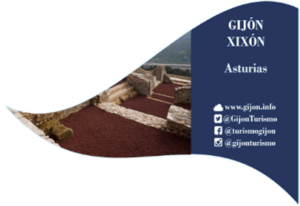
- Museum of the Campo Valdés Roman Baths (1995)
- Campa Torres Archaeology and Nature Park (1995)
- Veranes Roman Villa Museum (2007)
- Roman Wall
- Tumular necropolis of Monte Deva
- Vía de la Plata roman road
- Fish-Salting Factory (1991)
Museum of the Campo Valdés Roman Baths (1995)
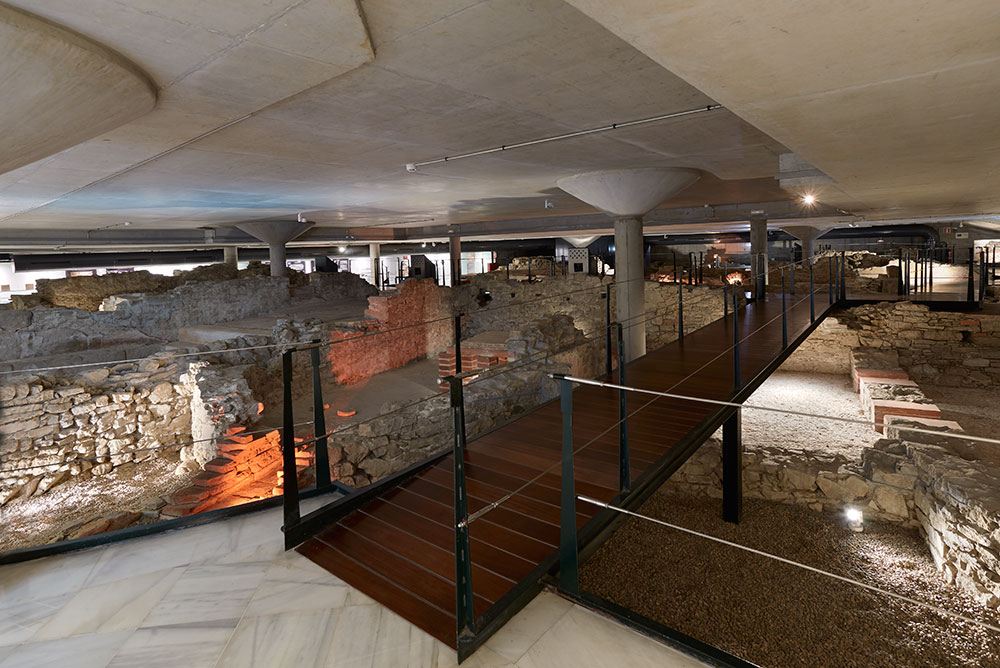
The baths were built at the end of the first century and beginning of the second century CE. The main rooms were extended over time to cater for an expanding population.
An on-site museum was opened at the baths in 1995.
C/ Campo Valdés, s/n
33201 Gijón
GPS Coordinates:
Laltitude 43.545382
Longitude -5.661104
http://museos.gijon.es
Phone: +34 985 185 151
museosarqueologicos@gijon.es
Timetable
All year
- Tuesday to Friday: 9:30 – 14:00 and 17:00 – 19:30
- Saturdays, Sundays and holidays: 10:00 – 14:00 and 17:00 – 19:30
Closed
- Every Monday of the year
- January 1 and 6
- Tuesday of Carnival
- August 15, December 24, December 25 and December 31
Campa Torres Archaeology and Nature Park (1995)
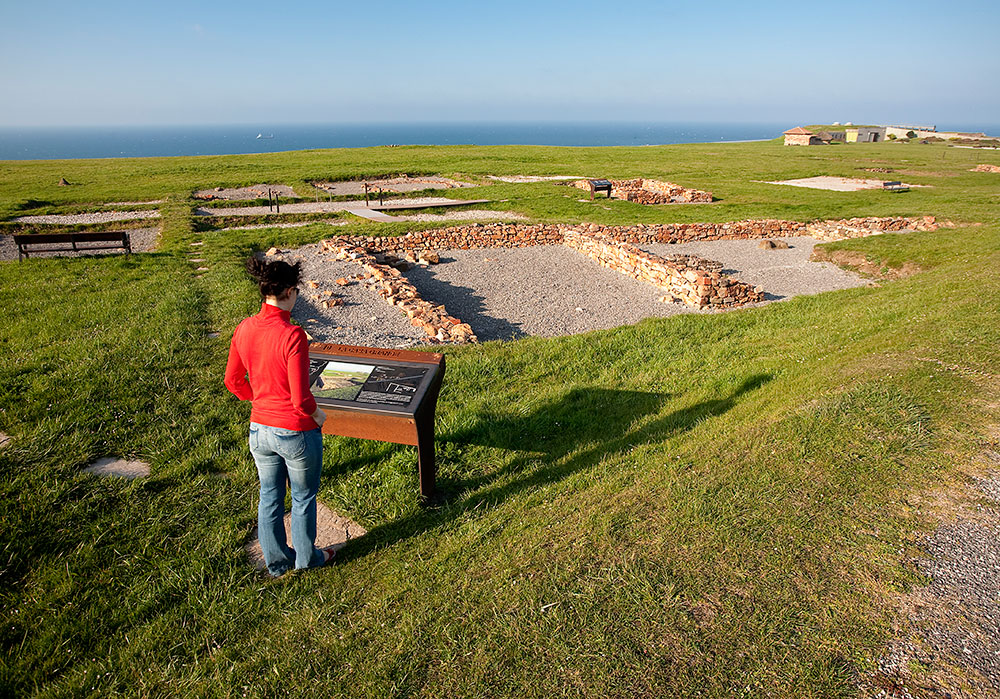
The park, which includes an Astur-Roman fort, explains the early history of the principality and the origins of the city of Gijón. It gives us an insight of the development from the pre-Roman to the Roman periods. The park contains three main buildings: a reception area, the museum and a lighthouse. The archaeological trail includes thirteen information points showing key features of the archaeological digs. There is also information on the different types of plant and how they have developed historically to form the landscape we can see today.
C/ Cabo Torres, 3834
33290 Gijón
GPS Coordinates:
Laltitude 43.566303
Longitude -5.705334
http://museos.gijon.es
Phone: +34 985 185 234
museosarquelolgicos@gijon.es
Timetable
From October to March
- Tuesday to Sundays and holidays: 10:00 – 17:00
From April to September
- Tuesday to Sundays and holidays: 10:30 – 19:00
Closed
- Every Monday of the year
- January 1 and 6
- Tuesday of Carnival
- August 15, December 24, December 25 and December 31
Veranes Roman Villa Museum (2007)

The Roman villa, which is situated 12 kilometres from Gijón, covers an area of one hectare. It stands halfway up a hillside, some 150 metres above sea level, on the Roman road known as the Silver Way.
The villa at Veranes was a large agricultural centre founded in the first century CE, during the reign of Flavius. It remained in use until the fifth century CE. After this period, it was used for other purposes and alterations were made to the buildings, but it continued to be an important local centre of activity and religious worship throughout the Middle Ages.
C/ Veranes, s/n. L’Abadía de Cenero
33392 Gijón
GPS Coordinates:
Latitude 43.485686
Longitude -5.753745
Phone: +34 985 18 51 29
museosarqueologicos@gijon.es
http://museos.gijon.es
Timetable
From September 16 to June 15
- From Tuesday to Sunday and holidays (except for official closing), from 10:00 to 15:00
From June 16 to September 15
- From Tuesday to Sunday and holidays (except the official closing), from 10:30 to 19:00
Holy Week
- From 10:00 to 17:00, from Tuesday to Sunday
Roman Wall
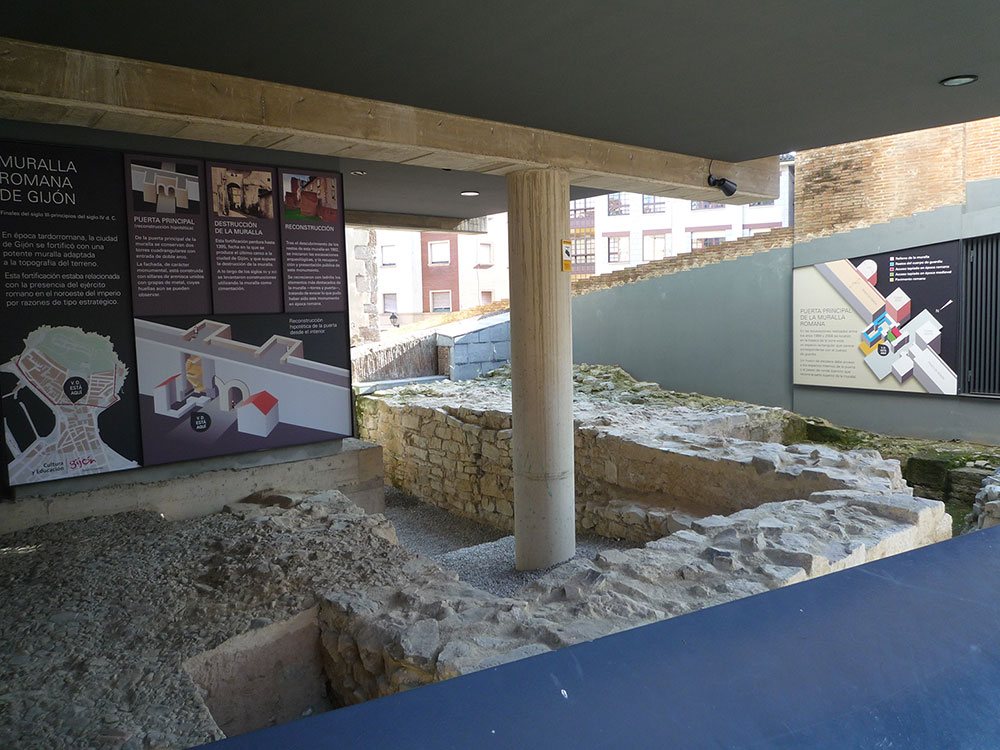
The city wall of Gijón was built during the late Empire (end of the third century CE and first third of the fourth century). Documented in mediaeval chronicles, it protected Gijón until 1395 when King Henry III of Castile ordered it to be knocked down and the city destroyed as punishment for its part in the rebellion against the Trastámara dynasty. The wall, which was 850 metres long, with a maximum height of at least 3 metres and a width of 4.6 metres, protected the Cimavilla peninsula.
C/ Recoletas, 5
33201 Gijón
GPS Coordinates:
Latitude 43.545705
Longitude -5.663145
http://museos.gijon.es
Phone +34 985 181 040
museosarqueologicos@gijon.es
Timetable
Open all year.
Tumular Necropolis of Monte Deva
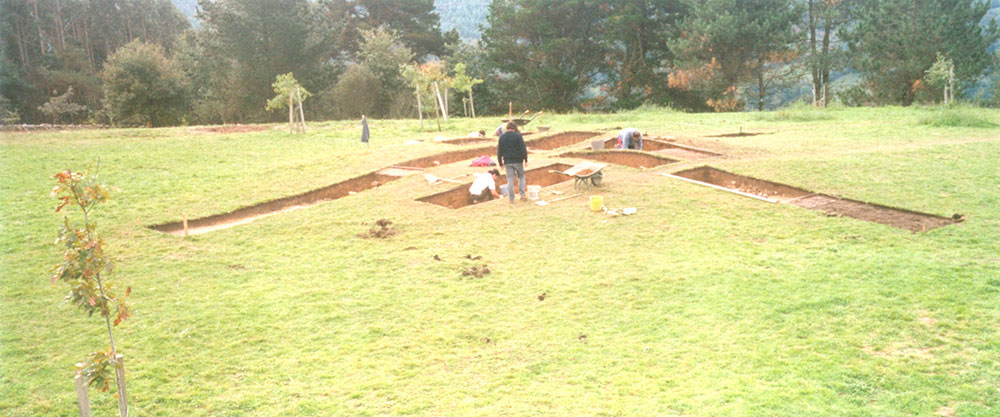
The tumular necropolis of Mount Deva is an archaeological complex with a dozen archaeological sites, nine of which are burial mounds and another one is a quarry to get large blocks of stone and build large graves, there is at least 5,000 years. Thanks to the information collected during the excavations, the site has been valued, and offers to the public heritage of Gijón, not only a leisure area placed in a great natural beauty, also information about a transcendent space used a dozen centuries before. A mountain sanctified by oldest societies, which transformed the mountain into a resting place for their dead.
Parque Natural Monte Deva
33394 Gijón
GPS Coordinates:
Latitude 43.493674
Longitude -5.587461
http://museos.gijon.es
Phone +34 985 181 040
museosarqueologicos@gijon.es
Timetable
open all the year
Vía de la Plata Roman Road
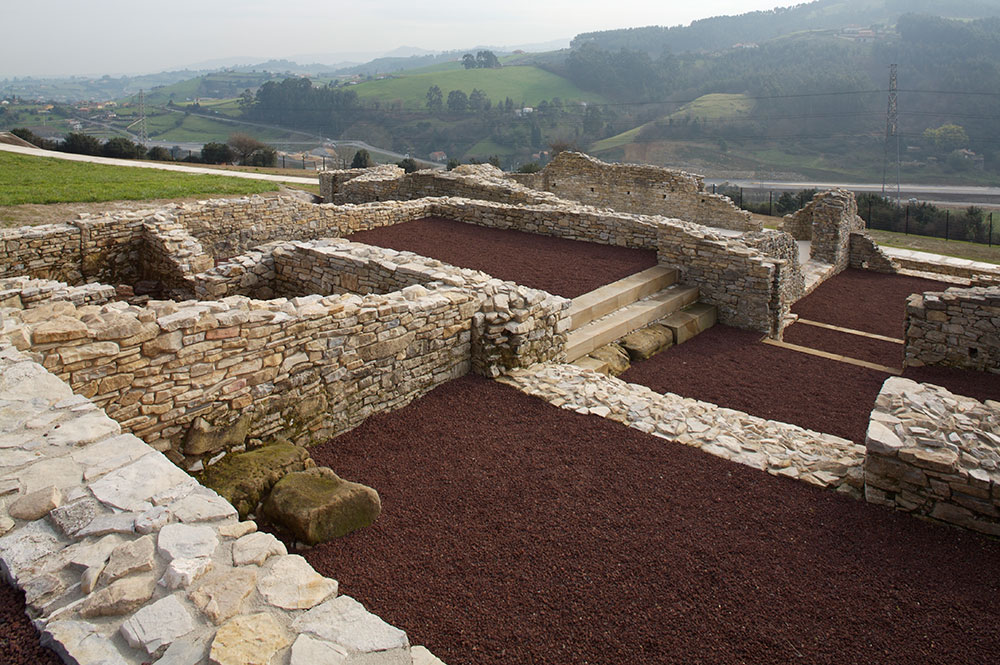
The” Vía de la Plata” Route is a current, cultural and tourist itinerary that runs through the west of the Iberian Peninsula, from Seville to Gijón. There are archaeological testimonies in this route since the Tartessian times. Rome used it during the Conquest Wars.
The itinerary enters in Asturias through the highlands of La Carisa and runs through the central area until it arrived at the Cantabrian Sea in Gijón. In the municipality of Gijón the route is organized in 2 stages with a north-south direction.
First: Gijón-Venta de Puga: You can start the tour from the Archaeological Natural Park of Campa Torres or from the Roman Baths of Campo Valdés.
Second: Venta de Puga to Altos de La Rodriguera.
Fish-Salting Factory (1991)
Dating from the third century CE, this was the first facility of its kind to be excavated anywhere on the north coast. After careful study and cataloguing, the remains of the plant were covered over again.
ACCOMMODATION
Gijón has a truly extensive range of hotels. You may choose the hotel that suits you best according to its location, in the city centre or in the surroundings, number of stars, services, etc.
Among the accommodation available in Gijón, there are also outstanding country hotels, especially suitable for enjoying the peace and tranquillity of the surroundings and the quality of their facilities and services.
Gijón has a wide range of more economic accommodation that is not lacking in facilities and comfort.
Rural Gijón invites you to enjoy its country cottages, situated right in the countryside, just a few minutes from the city centre, in a beautiful natural setting.
The young also have the possibility of staying at Gijón´s youth hostel, with its spacious facilities and wide range of activities.
Another formula for enjoying a pleasant stay in Gijón are its tourist apartments.
Camping enthusiasts may also enjoy Gijón at superb facilities very close to the city centre.
WHERE TO EAT
To see the complete list, click here
Tourist Office
Infogijón – Casa Paquet
Plaza Fermín García Bernardo, s/n
https://www.gijon.es/es/turismo/informacion-turistica
Teléfono: +34 985 341 771
infogijon@gijon.info

Timetable
- From November 2 to May 9 10:00 – 14:30 & 16:30 – 19:30
- From May 10 to November 1 and Constitución holiday weekend 10:00 – 20:00
- August 10:00 – 21:00
Infogijón – Escalerona
Playa de San Lorenzo. Escalera 4
https://www.gijon.es/es/turismo/informacion-turistica
Teléfono: +34 985 341 771
infogijon@gijon.info

Timetable
- May 21-30 and September 17-26
- Friday 16:00 – 20:00
- Saturday 10:00 – 14:00 & 16:00 – 20:00
- Sunday 10:00 – 14:00
- From June 1 to 10 10:00 – 14:00 & 16:00 – 20:00
- From June 11 to September 12 10:00 – 20:00
- From July 10 to August 22 extended opening 10:00 – 21:00
- Pilar and Constitución holiday weekend 10:00 – 14:00 & 16:00 – 20:00
HOW TO GET HERE?
Road access
By car
Running South-North from the interior of the Iberian Peninsula, the layout of the former is defined by the N-630 Ruta de la Plata National Highway (Gijón-Sevilla) and parallel to this, the A-66 and AP-66 motorways (Benavente-Gijón and León-Campomanes, respectively), which facilitate ease of movement from the south of the peninsula: Madrid, towns and communities along the Ruta de la Plata and other road links.
The A-66 motorway is currently being developed along the entire 800 km route between Gijón and Seville, of which, nowaday, more than one third is in service, and the rest is under construction.
The second major road link, which runs East-West along the entire Cantabrian Coastline, is defined by the N-634 National Highway (Irún-Santiago de Compostela), which in Asturias forks along the coast via the N-632 (Ribadesella-Canero), known as the Carretera de la Costa (Coastal Highway), thus enabling one to either head inland or drive right alongside the sea. This corridor, running parallel to the Cantabrian Sea, is now practically doubled up in the East from the French border to Gijón by the Cantabrian Motorway and Dual Carriageway (AP-8 and A-8), which is presently in diverse stages of construction towards the West from the centre of the Principality of Asturias to Galicia.
Gijón, Oviedo and Avilés are just a few minutes away from one another, linked by the motorway popularly known as the “Y”, which connects up the A-8 with the A-66. The new dual carriageways, the A-64 (Villaviciosa-Oviedo) and the A-63 (Oviedo-Grado-Salas), as well as the AS-1 Mining Valleys Dual Carriageway (Gijón-Mieres) offer a new layout of major roads within the region that, alongside the fully renovated network of regional roads, connect Gijón with great ease to the rest of the Boroughs and Shires of the Autonomous Community of the Principality of Asturias.
Passenger road transport
Diverse passenger road transport companies connect Gijón with a wide range of daily possibilities, with daily links with Madrid and the main cities in Spain, as well as with other points in the Asturian community.
- ALSA
- Autocares Medina
- Autos Cabranes
- Autos Licasa
- Autos Mariano
- Autos Sama S.A.
- Autos Xavina
- Pullmans Llaneza
By train
The Railway Companies RENFE and FEVE link the town with the rest of Asturias and Spain. RENFE has possible daily destinations with Madrid, Barcelona, Alicante (except Saturdays) and combinations with other Spanish towns and cities.
By plane
Asturias Airport is located in Santiago del Monte, in the borough of Castrillón, and has connections with several major cities and islands: Madrid, Barcelona, the Balearic Islands, the Canary Islands, Paris, London…
Accesses:
The Airport is a thirty-minute drive from Gijón on the fluid motorway link (A-8).
Visitors that arrive by air have three options to get to the town:
There is a taxi rank in the airport itself that is in service until the arrival of the last flight.
ALSA offers several daily coach services Gijón – Airport – Gijón.
Schedules: More information
Four car hire firms offer their services with a broad timetable. These firms also have branches in Gijón:
- Avis
- Europcar
- Hertz España
- Enterprise Rent-a-Car
By boat
The Port of El Musel , six kilometres from Gijón town centre, has one of the most important port installations in the north of Spain.
Specialised in bulk handling, cement, containers and iron and steelworks products, it also houses the town’s fishing installations.
Thanks to its excellent location, its deep drafts and sheltered waters, cruise ships may enter and dock in El Musel.
C/ Eduardo Castro s/n
33212 Gijón
GPS Coordinates: Altitude 43.5537079 – Latitude -5.7017148
www.puertogijon.es
Tel. +34 985 179 600
informacion@puertogijon.es
Facebook: https://www.facebook.com/PuertodeGijon
Twitter: https://twitter.com/PuertodeGijon
Instagram: https://www.instagram.com/puertogijon
LinkedIn: https://es.linkedin.com/company/puertogijon
Youtube: https://www.youtube.com/user/PuertoGijon
Bus lines
The town has a complete, easy-to-use network of public bus lines, EMTUSA, that facilitates access to all corners of the town and its surrounding countryside.
Taxis
Another comfortable form of transport is the Taxi.
The traveller will find numerous taxi ranks around the town and may order a taxi by calling either of the two taxi cooperatives in Gijón:
- Radio Taxi Gijón
- Radio Taxi Villa de Jovellanos
